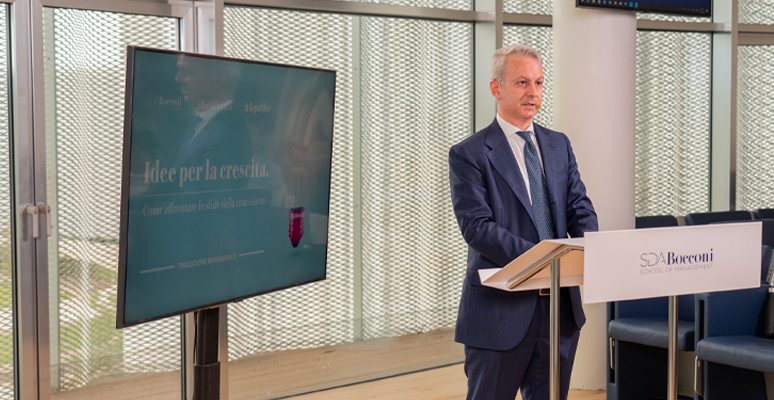
- Start date
- Duration
- Format
- Language
- 8 May 2025
- 6 days
- Class
- Italian
by Mikkel Draebye, SDA Professor of Strategy and Entrepreneurship
VR IS A CONSTANTLY GROWING MARKET, WHICH IN 2020 WILL BE WORTH 15 TIMES MORE THAN LAST YEAR. AUGMENTED REALITY AND VIRTUAL REALITY (AR/VR) ARE NO LONGER CONFINED TO THE GAMING INDUSTRY AND ARE ALSO BECOMING ACCESSIBLE IN COST TERMS
According to a report by Superdataresearch, the Augmented Reality and Virtual Reality (AR/VR) industry will hit a total turnover of almost $30 billion by 2020, i.e. a growth multiple of 15 with respect to the figure of $2 billion in revenues registered for 2016. Growth in sales will be driven not only by the growth of traditional segments, namely gaming and home entertainment, but by business applications, too. In the landscape of business applications, architecture apps are emerging strongly. In construction it is increasingly common for builders to develop 360-degree virtual reality animations that allow clients to navigate inside spaces before they are built, thus allowing clients to understand how buildings will work from the point of view of users. Navigation is made easier by VR goggles, but also by systems that enable you to simulate a physical walk inside the building’s premises. There are two major reasons for the growth of the sector: cost and value.
In terms of cost, the main driver is the dropping price of VR headsets. VR solutions manufactured by corporations such as Oculus, Sony, HTC, Samsung and Google, can be purchased at prices ranging from 80 to 500 euros, costs that are far from being prohibitive for business clients. It also helps that the spread of these devices is expected to reach the 100-million mark in 2019. And in terms of software and content, prices are also decreasing; the rising diffusion of toolkits for the development of VR content will reduce them even further.
The other driver, which in my opinion is the most interesting one, concerns the value that could be freed and/or created through this new technology. In university classrooms, we explain the value created by information and communication technologies as a trade-off between content richness and a medium’s reach. In the old economy, any rich (i.e. multimedia and interactive) business presentation had to be first of all a real-world experience. Those who did presentations had to talk in public, interact with a live audience, and show physical artifacts. In the words of management theorists Evans and Wurster, the world of information used to be connected to the world of things, and thus for a given budget there was a trade-off between the number of people that could be reached and the quality/richness of the interaction involved. In the new economy this trade-off is changing: for the same money and without compromising the quality of the interaction, through Internet technology a company can reach thousands of potential customers, because information has now been decoupled from material objects.
With the reduction of cost, AR/VR and also AI (Artificial Intelligence) technologies will enable an easing of the constraints imposed by the richness/reach trade-off. In business activities related to marketing, training and design, wherever web technologies have been unable to provide a rich alternative to personal interactions, AR and VR will allow an increase in reach for the same cost level. And with AR, the richness of information provided could even increase with respect to real-world interactions. As a result, the growth of the AR/VR industry is not likely to end anytime soon.
Source: ViaSarfatti25




